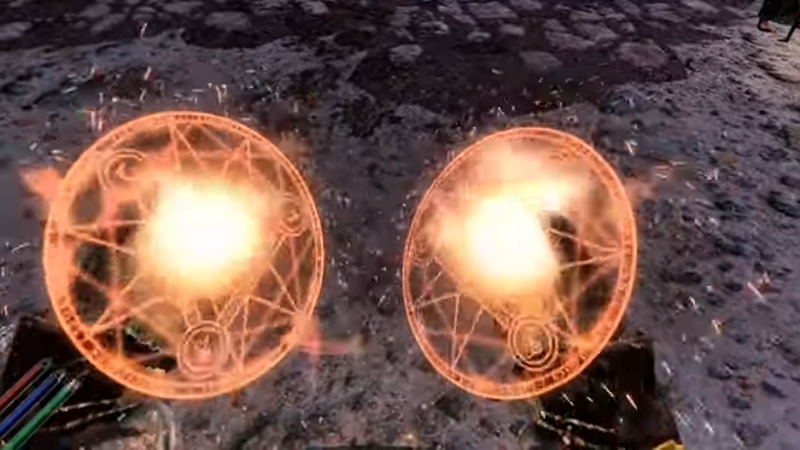[Cangar]’s excitement is palpable in his release of a working brain-computer interface (BCI) mod for Skyrim VR, in which the magic system in the game is modified so that spell effectiveness is significantly boosted when the player is in a focused mental state. [Cangar] isn’t just messing around, either. He’s a neuroscientist whose research focuses on assessing mental states during task performance. Luckily for us, he’s also an enthusiastic VR gamer, and this project of his has several interesting aspects that he’s happy to show off in a couple of videos.
The Muse 2 fits under the VR headset easily.
” data-medium-file=”https://hackaday.com/wp-content/uploads/2021/11/Muse-2-device-fits-under-HMD.png?w=399″ data-large-file=”https://hackaday.com/wp-content/uploads/2021/11/Muse-2-device-fits-under-HMD.png?w=399″ loading=”lazy” src=”https://hackaday.com/wp-content/uploads/2021/11/Muse-2-device-fits-under-HMD.png?w=250″ alt=”User wearing VR headset” width=”250″ height=”250″ srcset=”https://hackaday.com/wp-content/uploads/2021/11/Muse-2-device-fits-under-HMD.png 399w, https://hackaday.com/wp-content/uploads/2021/11/Muse-2-device-fits-under-HMD.png?resize=250,250 250w” sizes=”(max-width: 250px) 100vw, 250px”>
It all starts with the player wearing a Muse 2 meditation device; a type of passive, off-the-shelf electroencephalography (EEG) unit aimed primarily at guiding a user towards better relaxation and focus. [Cangar] reads data using the Brainflow library and processes it into a final value on a scale between “not focused” and “focused”. [Cangar] makes a point of explaining that his system ultimately has the goal of modeling the player’s state of mind, which is different from modeling just the brain activity. As such, motion data is considered as well, and holding still confers a small bonus to the process.
How is this data actually used in the game? In VR, this “focus” value is shown as a small bar on the player’s wrist, and spell effectiveness (for example, damage for attack spells) scales along with the size of the bar. When the bar is full a player would be very powerful, with spells doing double damage. If the bar is empty, spells will do little to no damage.
[Cangar] demonstrates the mod in two videos (both embedded below), but you won’t see him blasting enemies with fireballs. Presumably, VR gamers already know what that looks like, so what he does instead is explain how the system looks and works (first video, cued to 4:12), and in the second, he video demonstrates how the focus meter changes depending on his activity and mental state.
The results look exciting, and the potential uses of a system like this are pretty interesting to think about. Taking a few deep breaths and calming one’s body and mind before launching a magical attack will have a tangible effect in the world, and because things rarely go according to plan, there is also a clear survival benefit to learning to focus while under pressure. But if a brain monitor isn’t your cup of tea, maybe consider a leisurely bike ride through Skyrim, instead.
Source:: Hackaday

